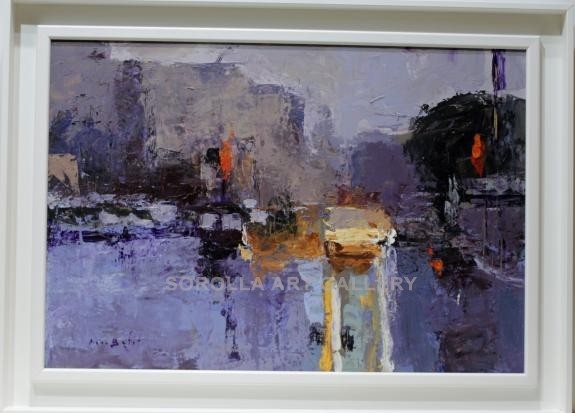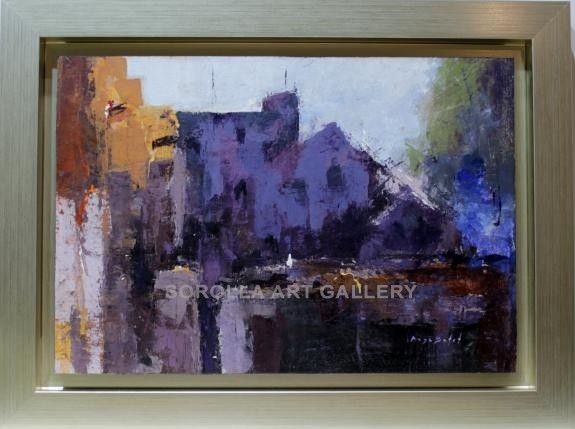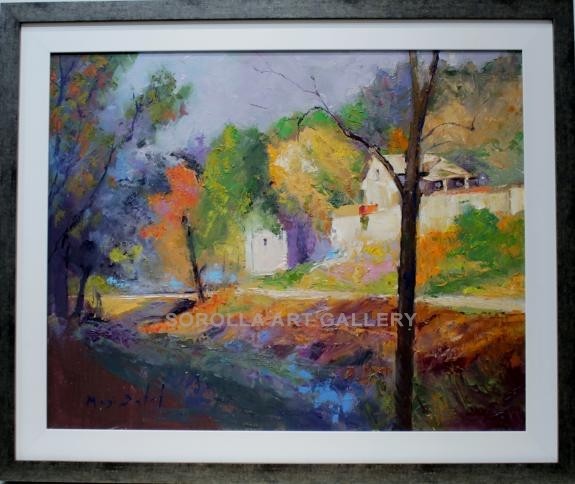Categories
MAGI BATET



Born in Agramunt, Catalonia, on November 3, 1943, he manifested his artistic skills in his early childhood, but he did not put them to use until the eighties, when he produced a tireless artistic work using all media which he discovered.
In his beginnings he drew with pencil and gouache and after that he started to work with acrylic and continued experimenting with this technique of combining colors and transferred pictures, watercolor, acrylic, pastel, etc.
His relationship with the great artist / writer Josep M. Álvarez Hurtado and his sporadic contact with the great masters Guinovart Martinez Lozano and others,as well as the wise counsel of the art critic Josep M. Cadena, nurtured his creative abilities.
It was at this time when he worked with some galleries in Catalonia (Negre and Bosch Lluis Sabadell, AB in Granollers, Barcelona Jaimes and Collell and others in Sant Cugat, Sitges, Olot, Palafrugell, etc.)
He is now 70, and for the last 10 years he has been focusing on landscape and figure painting (oil and acrylic) in a style definable as "Neo Impressionist", but he cannot avoid occasional incursions into "figurative Abstract"
His work is present in private collections in Spain, France, Germany, England, USA, Japan, Colombia, etc.
Barcelona, August 2014
Critical review conducted by the artist and scholar Arturo Espinosa Rosillo, during one of the Magi Batet's exhibitions at the Cotxeras Borrell Civic Center, in Barcelona:
Batet Magi's work is an essential work in the deepest sense of the term. That intimate meaning, unfathomable, almost desolate, where the essence of things is manifested in its naked appearance, suffering.
His main concern is the representation of space. This vital space defined by some temporary elements, the light, very nuanced with harmonic ranges and color synthesis of the objects defined only through small contrasts in color, and usually structured around hardly formed geometries.
Everything in his painting takes on a lightness that is,at the same time, the touchstone of his painting. That lightness is not weightlessness, but temporality. His works clearly have weight, gravity, but gravitate around the same absence. His time is a bleak time- frame, somehow dehumanized, a trace of something that did not take place, and yet left in space that feeling of a filled emptiness. However that same desolation is full of light,as it has a luminous character. That emptiness, that elusive time has left us a strange sense of belonging, it enters into the soul, leaving an ancestral flavor that shies away from vanities and presents itself before our vision as a small joy.
A small detail, an umbrella in the rain, a ray of light, a fortuitous reflection, an abandoned object, they send signals, human remains, an exquisite nostalgia with which the author treats us. All is not lost, as in that desolation there are human traces, inviting us to hope, and at the same time taking us away from vanity and pride.
In that void, in this desolate space we find an old energy, which is as old as new, original as light itself, beautiful as nudity, amazing and delicate as a dew drop.
Magi Batet drinks from the original sources of Philosophy, where the self and its potential are uncovered, where the thought is amazed by the beauty of the shining light .
Arturo Espinosa.

